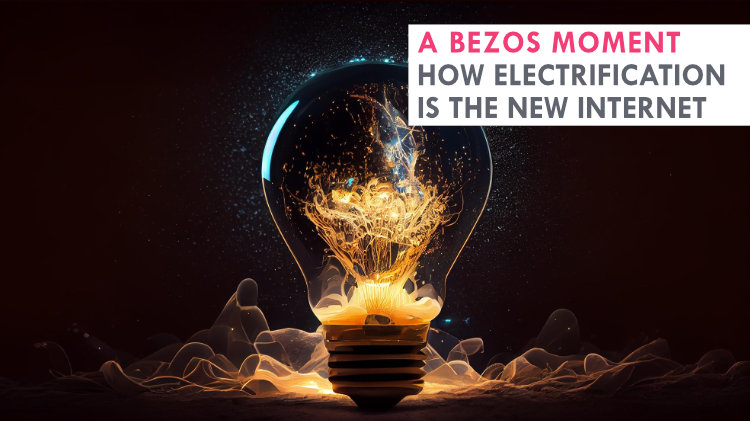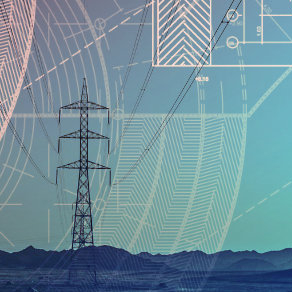
In 1994, Jeff Bezos was working at a hedge fund and researching potential business opportunities on the internet when he discovered a statistic that said the web was growing at 2,300% per year. This inspired him to start an online bookstore, which eventually became Amazon, a global e-commerce behemoth with a market cap of more than $920 billion. When Bezos was considering leaving his stable job to start his own business, he imagined himself at age 80 and wondered which decision he would regret more. He chose to take the risk and start Amazon in his garage, and his decision paid off beyond his expectations. But how could he know that his business would become so prosperous?
Creating your own bandwagon
“Anything growing that fast, even if its baseline usage was tiny, it’s going to be big. I looked at that, and I was like ‘I should come up with a business idea on the internet and let the internet grow around this’.”
The World Wide Web was created in 1989, and in 1992, there were only ten websites. However, the internet rapidly started to grow, likely due to the creation of search engines like Yahoo in 1994 and Google four years later. Today, there are over 1.6 billion websites and 4.4 billion internet users, representing more than half of the world's population. Looking ahead, current trends include the Internet of Things, AI-assisted search, augmented reality, etc. so there seems to be no ceiling for the internet.
But the internet is not the only technology that is about to become even more ubiquitous. The energy source to power it all is also just getting started: Electrification. Electricity has been powering our lives for many decades, but it is only now that the electricity market is starting to make a real breakthrough like the internet did in the 2000s and 2010s.
A new electrification wave
The global demand for electricity has been steadily increasing over the years due to population growth, urbanization, and industrialization and the International Energy Agency (IEA) projects that global electricity demand to further grow from 2020 to 2040 at a cumulative growth of approximately 67%. In Europe it is expected that by 2035 electricity demand will rise about 50% compared to today and for reaching net zero goals, to double until the year 2050. The direction we are heading is almost clear, but this is just the beginning, as some trends could gain even more momentum than predicted.
There is an increasing growth of the electric vehicle (EV) market, with the number of EVs on the road in the EU expected to skyrocket 650-1380%: from 6.1M at the end of 2022 to at least 40M by 2030, some estimates are as high as 84M. Likewise, the electrification of heating is soaring, with the number of heat pumps in the EU expected to more than triple to 60-72M by 2030.
The future will see electricity demand reaching a whole new level. Not only in Europe but all around the globe, it will be up to renewable energy sources, such as wind and solar, to meet this demand, as most countries aim to reduce their greenhouse gas emissions and transition to a low-carbon economy. According to the IEA, renewable energy is expected to account for almost 90% of the increase in global electricity generation from 2020 to 2040.
Investment opportunities
The electricity industry is therefore certainly an attractive field for investors, given the increasing demand for energy worldwide and the transition towards cleaner energy sources. This presents an opportunity for energy companies to expand their operations and increase their revenues by investing in research and development.
There are several opportunities to invest within the energy sector, particularly in the following areas:
Decentralized Energy: The decentralization of the energy grid is a growing trend, with more and more consumers looking to generate their own energy using renewable sources such as solar panels and wind turbines. Companies that provide solutions for decentralized energy, such as microgrids and energy storage systems, are poised to benefit from this trend.
Electric Vehicles: With the global shift towards cleaner transportation options, electric vehicles (EVs) are becoming an increasingly popular choice for consumers. Companies that manufacture EVs, develop EV charging infrastructure, offer charging services or provide software solutions for EV management are all potential investment opportunities.
Photovoltaics (PV): Solar energy is one of the fastest-growing sources of renewable energy, and companies that manufacture and install solar panels or inverters or develop new PV technologies are well-positioned to benefit.
Battery Storage: As renewable energy sources such as wind and solar become more prevalent, battery storage is becoming an essential component of the energy grid. Companies that develop and manufacture battery storage systems, or provide software solutions for their management and optimization, are great opportunities for investment.
Heat Pumps: Heat pumps are an efficient way to heat and cool buildings, and are becoming increasingly popular as a way to reduce energy consumption and greenhouse gas emissions. Companies that manufacture and install heat pumps, or provide software solutions for HVAC optimization will be booming pretty soon.
Demand-Side Management: With the increasing use of renewable energy sources and the decentralization of the energy grid, demand management solutions are becoming increasingly important. Growth lies ahead for companies that provide hardware or software solutions for energy optimization, demand response, or energy efficiency.
Energy Management Systems: By using advanced analytics and machine learning algorithms, an asset owner can optimize the performance of solar panels, batteries, and HVAC systems. These systems can also integrate with demand response programs and energy markets to help users maximize the value of these energy assets. Companies that provide energy management solutions are well-positioned to benefit from the growing adoption of decentralized energy, renewable energy, and smart grid technologies.
The Jeff Bezos Dilemma
Many companies in the energy industry today are facing a dilemma when it comes to next-level electrification. The traditional approach has been to rely on fossil fuels for energy, but with the growing concern over climate change and the development of renewable energy technologies, a lot of businesses are now faced with the decision of whether to stick with what has worked in the past or to explore new, cleaner energy sources.
Jeff Bezos experienced a similar dilemma of whether he should operate in his known ways or to go all-in and explore new, untested avenues. Just as the internet was a transformative force for Jeff Bezos and Amazon, the next level of electrification could be the next frontier for many companies. With the world's increasing demand for sustainable and clean energy, there is a great opportunity for companies to step up and innovate in this space. Companies must invest in research and development, collaborate with other industry players, and engage with policymakers to create a supportive regulatory environment for sustainable energy. Only then will they successfully explore new avenues and help to make the energy transition happen.




